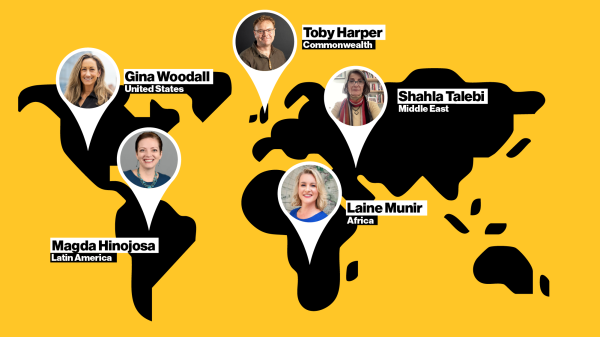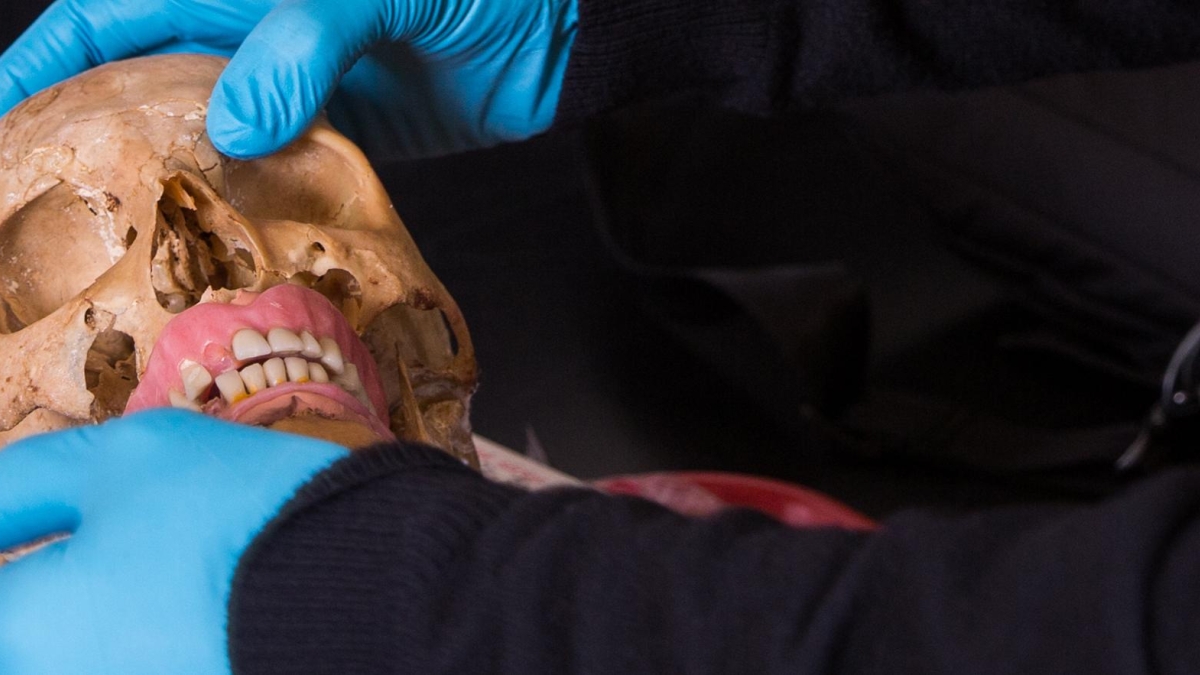In 2000, duck hunters found the body of a young woman near the Great Salt Lake in Utah. Her remains were badly decomposed, but she had long hair.
Hair, which grows at about a centimeter per month, can hold travel history. When forensic scientists analyzed the isotopes in the woman's hair, they could see she repeatedly moved from the Pacific Coast, up near Washington or Oregon, to Utah and back again. She did that over a few seasons from year to year. They connected that information to a woman who had been traveling between different members of her family. The timeline matched. Eventually, with DNA, they were able to match her identity to her remains.
“That’s really powerful,” said forensic chemist Gwyneth Gordon, a research scientist at Arizona State University. “You could really write someone’s biography with this.”
Gordon, who has just been awarded a $570,000 grant from the Department of Justice to investigate the variation in isotopes in human skeletons, says the science basically tells a life history through chemistry.
“You see this on the news all the time when they say, ‘Oh, King Henry used to eat a lot of fish,’ or ‘We found this body and we can tell they came from New England,’” she said. “That’s what it’s used for.”
Using isotopes to trace where people are from has moved from anthropology to forensic science. The science uses combinations of oxygen, hydrogen, carbon, nitrogen, strontium and lead isotopes. Each different isotope system has its own set of information.
“One of the difficulties with anthropology is they don’t know what the real answer is because everybody died hundreds or thousands of years ago,” said Gordon, a research scientist with the School of Earth and Space Exploration. “You make these measurements and you make the best estimate you can, but there’s not been a lot of validation work where we know the answer. We’re going to test it.”
During the two-year study, Gordon will determine the accuracy of results by doing detailed validation and work on the underpinning science. The research has important implications for using chemistry to identify the remains of victims of crimes, natural disasters and war.
“There are a lot of concerns in forensics about reliability and getting things into court,” she said. “In order for this technique to really be used robustly, we’ve got to have that underlying science really solid. … What we’ve gotten funding for is to really look into a lot of detail at people. … We’re going to test these techniques that have been shown in case studies and really rigorously test it.”
Cases where isotope analysis helps make an identification get publicity, but cases where there’s no result do not.
“Is that because the interpretation was wrong, or because the science wasn’t there, or because there wasn’t enough additional information?” Gordon said. “We don’t know. It has the potential to do more identifications. It’s a powerful tool, if you know how to use it right.”
Gordon will be working with three human decompositional facilities at the University of Tennessee, Texas State San Marcos and Colorado State. Often dubbed “body farms,” they are research facilities where bodies are placed outside to face the elements so scientists can better understand the process of decomposition. The University of Tennessee has the largest human skeleton collection in the world. Donors fill out an extensive questionnaire about their diets, travel history and other details so scientists can learn how to better read isotopes.
“Your bones are constantly turning over, and they turn over at different rates,” Gordon said. “Your bones will record the last five to 20 years of your life.”
Samples also use a lot of material — like an entire rib — to analyze. Gordon thinks that can be reduced.
“We don’t think that’s necessary,” she said. “We think you may able to do it with just one little bone of the finger or toe. That would be much less destructive. … We’re also testing that.”
Top photo by Deanna Dent/ASU Now
More Law, journalism and politics

ASU committed to advancing free speech
A core pillar of democracy and our concept as a nation has always been freedom — that includes freedom of speech. But what does that really mean?Higher education doesn’t have an agenda to curate a…

ASU experts share insights on gender equality across the globe
International Women’s Day has its roots in the American labor movement. In 1908, 15,000 women in New York City marched to protest against dangerous working conditions, better pay and the right to…

ASU Law to offer its JD part time and online, addressing critical legal shortages and public service
The Sandra Day O’Connor College of Law at Arizona State University, ranked 15th among the nation’s top public law schools, announced today a new part-time and fully online option for its juris doctor…


